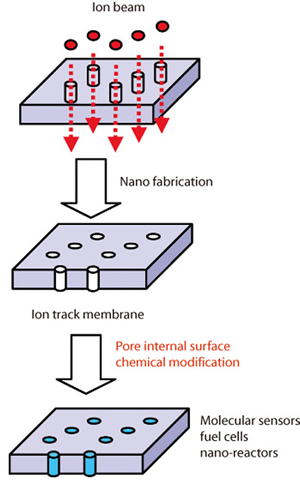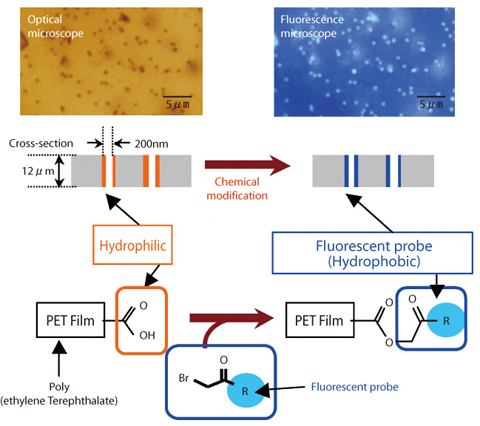
Fig.4-10 Creation of functional thin films using the chemical modification of
the internal surfaces of nano-pores in ion track membranes

Fig.4-11 Direct observation of internal surfaces of nano-pores using fluorescent probes
When polymer membranes are irradiated by swift ion beams, ion track membranes with size controlled nano-pores can be prepared (Fig.4-10). By development of modification techniques of chemical structures and surface properties of the nano-pores (pore internal surface chemical modification), electrolyte layers necessary for fuel cells can be prepared. However, until now the chemical modification of the internal surfaces could not be practically controlled because there was no method to observe the internal pore surfaces. Here, we noticed that hydrophilic internal pore surfaces are subject to the alkylation reaction. Using alkylation reagents with fluorescent probes, the extent of chemical modification can be observed by the emission from the probes at pore internal surfaces. Thus, this method should allow a direct observation of the condition of pore internal surfaces.
We prepared the ion track membranes of poly(ethylene terephthalate) (PET) by ion irradiation followed by chemical etching in an alkaline solution. By introducing the solution of alkylation reagent having fluorescent probes into the pores with 200 nm in diameter in the PET, the hydrophilic internal pore surfaces can be modified chemically to a hydrophobic character. The probe emissions can be observed in the fluorescence microscope image of the membranes, from which the positions of the pores can be located; Emissions from the ion track membranes could not be observed before alkylation reactions (Fig.4-11). Furthermore, the emission and excitation intensities of the membranes increased proportionally with increases of the pore surface areas. Thus, we can make semi-quantitative estimation of the degree of chemical modification of the pore internal surfaces.
Accordingly, by adding the fluorescent probes to the alkylation reagents, a direct observation method can be established to estimate the extent of the chemical modification of the internal pore surface of ion track membranes. This method should be of use in the efficient creation of nano-layers for molecular recognition, electrolytic and catalytic properties; these materials are key component for molecular sensors, fuel cells, and nano-reactors.